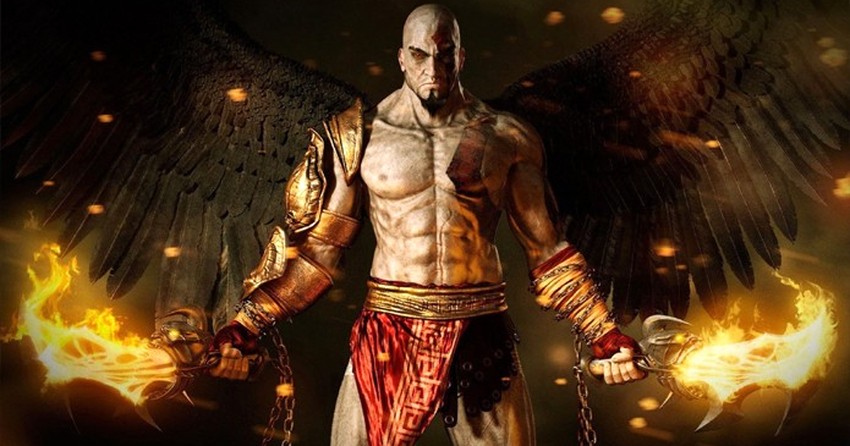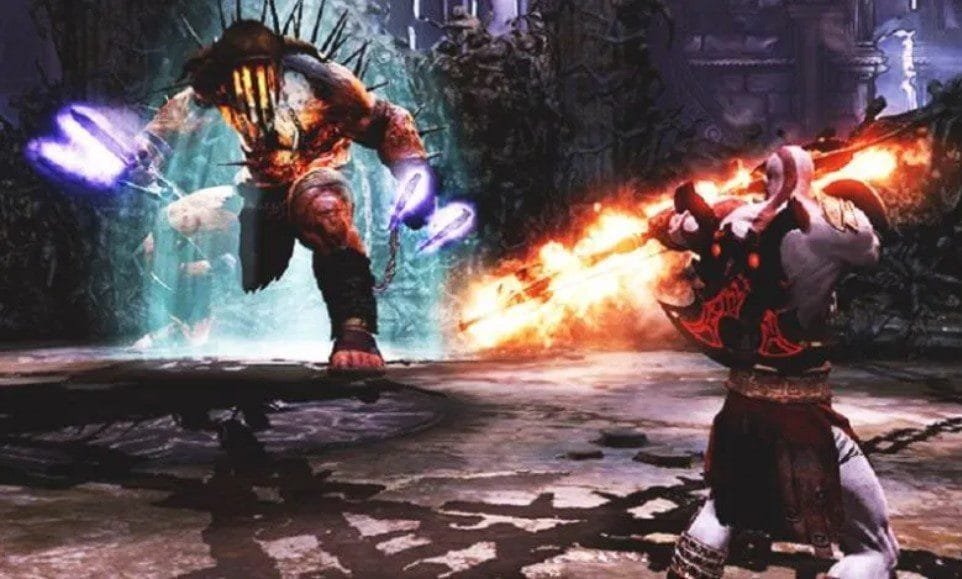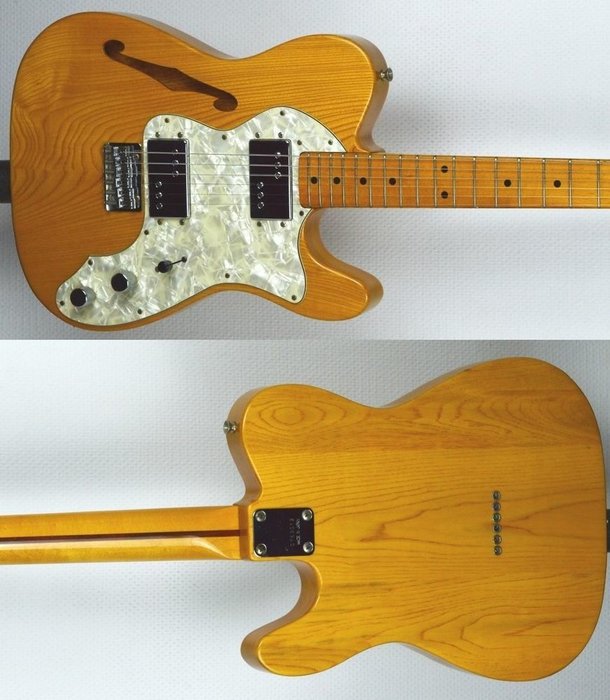
For all intents and purposes these late 70's early 80's Greco Fender copies feel and look much like. This has the 25.5" (earlier Greco Fender copies were Gibson scale) scale maple neck in a nice thin but not too think Tele profile with medium frets. Thinlines have a centre block and are really more of a weight relieved Tele to bring the weight of the ash Fender was buying to acceptable "Tele levels" They added an F hole to show it was indeed hollow. This is a hollowed out ash body made like an original Thinline with a solid Tele body being hollowed out from the back and a cap glued on to seal it.

So, this Greco Tele Thinline here was made by FujiGen in May 1980 and was the type of guitar Fender employees would have seen this factory make and made them decide to use them to make "real" Fenders. Although the deal ran from 1982 to 2015 FujiGen only made guitars for Fender until 1996 when Tokai, who were originally considered to make Fender products took over with Dyna. The Fender deal was a licence deal giving Fender a payment for every guitar sold with it's name on it. Kanda Shokai owned the brand name Greco and was a wholesaler who got guitars builot by several factories including the amazing FijiGen Gakki who made this particular guitar here.įujiGen made incredible guitars for many different brands for both domestic market and export and once the deal with Fender was done, Greco would stop production of Fender copy guitars and they would be sold as Fender. After several months of negotiations Greco was chosen as the new manufacturer of official Fender products in Japan, or to be more precise a deal between Kanda Shokai, Yamano Gakkiwas and Fender was agreed upon in March 1982. Several high ranking employees of Fender went to Japan to start negotiations with brands like Tokai, Greco and Fernandes.

Really worried, and they approached Japan in '81 they thought if we can't compete with these Japanese manufacturers, lets get them to make our stuff for us so we can at least make some money from them. They worked closely with companies like Maxon were more than happy to advance their pickups to represent as close as possible actual Fender products.īy 1980 Fender was getting worried. Late 70's Greco Fender copies were getting exceptionally close to "the real thing" and the company spent a lot of time, and money reverse engineering actual vintage Fenders in an attempt to get their guitars closer to them. By the late 70's brands like Greco were offering a huge range of Gibson and Fender copies including some models no longer made by these companies, essentially making "re-issues" before the actual companies did. Production and materials improved greatly throughout the 70's and moved that "made in Japan" label from "cheap plywood guitars" to well made copies at very affordable prices.

The 60's had been a mad house of inventive design and wonderful ideas but by the early 70's the market wanted more conservative designs based on the big 2 and Japan was happy to fill the void of guitars that looked like their more expensive siblings without the high cost involved in owning one. With so many guitars being made during the 60's and 70's there's always "short run" guitars with strange hardware or different pickups as manufacturers and brands scrambled to keep up with sales demands, especially from around '66 onwards.īy the early 70's most Japanese brands were either making good replicas of US guitars or starting to design their own styles based on those designs.

The history of Greco is well known now although like everything vintage Japanese, you can be into them for years and still get lovely little surprises with stuff you've not seen before. They're one of my favourite "brands" to emerge from Japan and despite being made in several different factories during their lifetime, the Japanese made ones, and early Korean ones I count in some of the best guitars I've ever played. I've written plenty about all types of Greco guitars in the past.


 0 kommentar(er)
0 kommentar(er)
